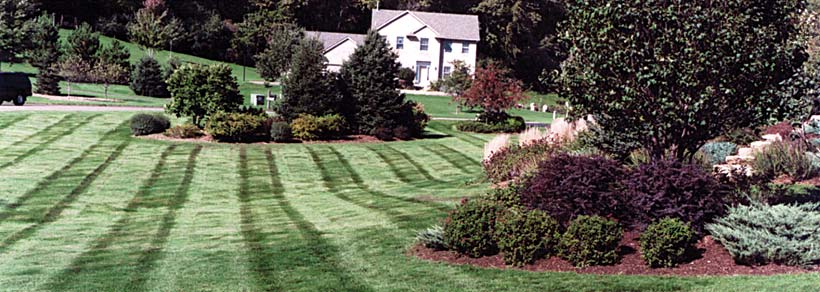Spring Lawn Care Tips

Let's work together to make your lawn look great! Follow these steps:
1st - After the snow has melted and the turf and soil has dried, a good raking or dethatching is in order.
2nd - Core aerate your lawn. This relieves soil compaction allowing grass to grow deeper roots to make better use of water and fertilizer.
3rd - The turf is ready for the Preemergent for Crabgrass.
Snow Mold
The snow has melted and now I'm left with spots of cottony matted growth 6" - 12" inches in diameter - what is it and how do I get rid of it?
It's gray or pink snow mold. Snow mold is a fungus that will appear in the spring after the snow melts. Serious infection leads to crown and root rot and a fungicide application will be needed. However, in most cases, infected areas will recover after raking or dethatching.
Mowing
✓ Change the direction each time you mow
✓ Always use a sharp mower blade
✓ Don't bag your clippings
✓ Never cut off more than 1/3rd of the grass blade
Watering
We recommend not watering right away in the spring after the snow melts - even if there is a week or two of dry weather. Why? Grass roots need to chase the water from the melting snow and spring rains. This will encourage deeper root growth to make your lawn healthier.
✓ Water deep and less frequent - irrigation systems should not run every day
✓ Always water in the early morning; this allows foliage to dry before evening
✓ Never water in the afternoon due to evaporation
✓ Never water in the evening because the grass will spend the night moist, which may foster fungal disease (Helpful reminder: never put your baby to bed with a wet diaper!)
Here is an easy way to measure how much water your irrigation system is applying during each watering cycle:
1. Set out a few empty soup cans in your lawn.
2. Let your irrigation system complete each cycle.
3. Measure how much water is in each can.
4. Adjust your irrigation timer accordingly.




